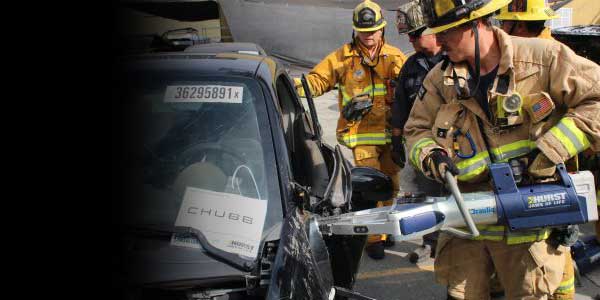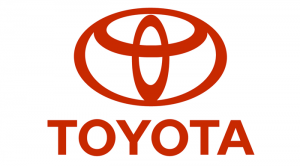
Editor’s note: This guest editorial appears in the February 2018 issue of BodyShop Business.
First off, let me start out by saying that this is one person’s opinion, a person who aspires for excellence in whatever industry a person chooses to work in. It by no means reflects the opinions or positions of any of the organizations or companies I work or consult for or provide services to, currently or previously.
The following is a hypothetical situation to stimulate thought and conversation among professionals, no matter what industry you’re in.
Widgets
So, let’s talk hypothetically. Let’s say you were in the business of repairing widgets, and you were repairing them directly for a company that promised customers that their widgets, if damaged, would be returned to their pre-damaged condition and would continue to perform the same as when they were new.
Now, widgets are sold at a variety of cost and performance levels. Also, of course, the type and amount of damage can vary considerably. However, they all have one common factor: People’s lives depend on their proper operation. Therefore, proper repair procedures and proper equipment are critical to repairing the widgets correctly. Otherwise, people could die or be seriously injured.
This company has several hundred people repairing widgets for them. They do not require any special training, equipment, and/or certifications of the people repairing widgets for them, only that they repair the widgets competitively, quickly and correctly. This company then measures your performance according to these three areas, and in turn rewards the top performers by sending them more widgets to repair. Sounds great, right? As long as the tools used for measuring were correct, let’s talk about them.
Measuring Performance
The company will measure the three categories as follows:
- “Competitively” will be measured by the average cost of each widget repaired.
- “Quickly” will be measured by how much time it takes to repair the average widget, commonly referred to as “lead time” in manufacturing.
- “Correctly” is the difficult one, especially if we don’t physically inspect each individual repair and compare the repair to the actual correct procedure. We could also recreate the original damage and look at the results, but that would be impractical and would defeat the purpose of repairing the widget in the first place. We could make sure that the shop is properly trained/certified, has the proper equipment to perform the repair, and can document the repair procedure – the latter being the most practical, cost-effective method to ensure quality repairs.
However, the company realizes that this method would force them to limit the number and type of shops that can be on their program; only well-trained, well-equipped and certified widget repair facilities could participate. This could adversely affect the competitive nature of the program by forcing all of the shops on the program to outlay a substantial amount of capital, which in turn could force the shops to possibly raise the price/cost of their widget repair. The company instead will choose to just tell the widget repair shops to fix it right, and then ask the customer if they’re happy with the repair, if everything looks good and if their widget is working properly. In essence, the company will ask the customer if the widget was repaired correctly, and assume that the customer has the knowledge and/or understanding of widget repair to properly answer that question. We will call this “customer satisfaction.”
So, hypothetically, repairing widgets quickly and cheaply is what is required to do work for the company – but the widgets have to look good and the customer better be happy!
A Win-Win
As the program progresses and the measurements come in, the company is ecstatic. They now can compare their widget repair shops, reward the top performers and eliminate or force the lesser-performing shops to implement customer satisfaction, efficiency and/or cost-saving strategies by showing these lesser-performing shops how they compare.
The company will never tell you how or why those shops are performing better. In fact, they really don’t know why; they’ll just tell the lesser-performing shops that the better-performing shops repair more parts on the widgets or use cheaper parts on the widgets or charge less labor to fix the widgets – without actually investigating why this is.
It’s a win-win. The customer is happy because the widget looks good, the company is happy because their costs are down, and many of the widget repair facilities on the program are happy because they’re getting a ton of widget repairs. A few of the widget repair shops aren’t happy because they feel they cannot properly repair the widgets to the OEM specifications within the program guidelines, so they’re either removed or they remove themselves. That makes the program even more competitive and forces the rest of the widget repair shops to look for more ways to cut costs and improve efficiency. It’s beautiful!
Who’s at Fault?
Then, someone’s widget fails to perform correctly, and a customer is seriously injured. It’s later discovered that a part that was supposed to be welded in place was instead glued to save time and labor, and it did not properly protect the owner of the widget. The widget repair facility says it’s not their fault because they’re trying to perform within the program’s parameters. The company says it’s not their fault because they told the shop to fix the widget correctly, and they never tell them how to fix the widget, only to fix it within their parameters.
So here are the questions I pose to you:
- Is this hypothetical possible?
- Who is at fault for this performance failure and for the possibility of more?
- What will happen to the widget repair shops that didn’t feel they could fix widgets correctly within the program’s cost parameters and are either removed or remove themselves from the program?
- Will the widget repair shops that continue on the program be able to appropriately compensate their qualified widget repair technicians, based on the more competitive structure of the program?
- Will this force widget repair technicians to leave this industry?
- Where will you find new, qualified widget repair technicians?
- Most importantly, how many more widgets have to fail before somebody does something about it?
Hypothetically, of course. Just sayin’.













